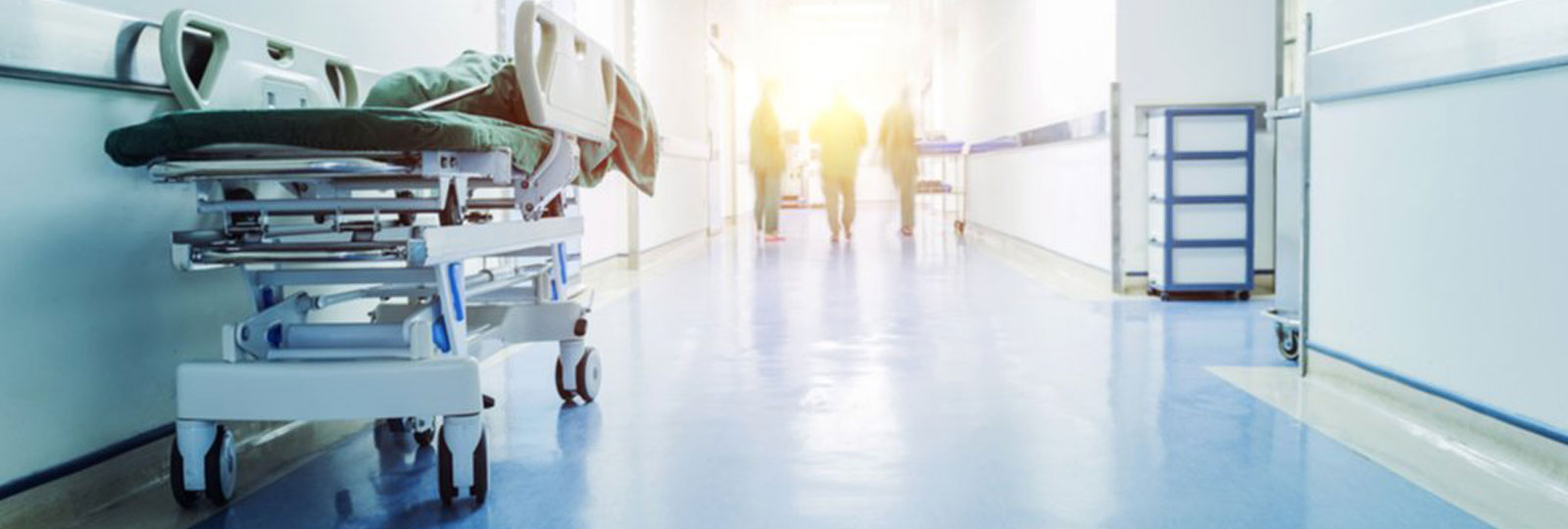
Healthcare-associated infections (HCAIs) are one of the biggest challenges facing health services around the world. In the UK alone, it is estimated that over 300,000 patients acquire HCAIs every year, and at a cost of millions of pounds for hospital trusts.
While hand hygiene and manual cleaning remain the ‘gold standards’ in maintaining hospital hygiene, the emergence of new infections and increasing antibiotic resistance means that these traditional methods are not always sufficient to address the transmission of infection.
The application of infection prevention and control (IP&C) in hospitals is crucial to the effective management of patient care and reducing the incidence of HCAIs.
Healthcare-associated infections (HCAIs)
A healthcare-associated infection (HCAI) is defined as any infection that occurs in the course of a patient’s treatment in a hospital or healthcare facility, but which was not present or incubating at the time they were admitted.
HCAIs also include infections that are acquired in hospital but that don’t become apparent until after discharge, as well as occupational infections that are acquired among healthcare staff.
According to the Health Protection Agency 2012, the six most common HCAIs are:
- Pneumonia/lower respiratory tract infections
- Urinary tract infections
- Surgical site infections
- Clinical sepsis
- Gastrointestinal infections
- Bloodstream infections
An alert organism or alert condition is one of a specified list of infections, which on identification, must be referred to a member of the IPCT for investigation.
Examples of alert organisms include MRSA, which has a severe antimicrobial resistance that is difficult to treat, as well as legionella, clostridium difficile and salmonella.
Examples of alert conditions include food poisoning, infectious diarrhoea, post-operative surgical site infections, viral hepatitis, typhoid/paratyphoid fever, chickenpox and shingles.
As the population becomes more resistant to antibiotics, the list of microorganisms that cause HCAIs continues to grow. Transmission of pathogens can occur in a variety of ways – whether due to prolonged antibiotic usage, the use of medical device insertions such as catheters, or while carrying out high-risk procedures.
Inadequate environmental hygienic conditions, poor waste disposal, insufficient patient flow regulation and a lack of knowledge of infection can also play a significant role in the spread of microorganisms.
HCAIs are significant harm events so it is important to ensure rapid and early diagnosis in order to provide effective treatment and to contain the infection.
The role of the infection prevention and control team (IP&CT)
Healthcare organisations are required to either have, or have access to, an infection prevention and control team (IP&CT), made up of suitably trained nursing and medical experts.
The IP&CT’s role is to provide evidence-based best practice advice to ensure the safety of patients, staff, the general public and the environment.
Their responsibilities include:
- Liaising with all departments, the Trust, and the local and national media
- Educating and training staff about IP&C
- Promoting best practice at local and national conferences
- Auditing and evaluating clinical practice
- Risk management, e.g. assessing the need for ward closure during outbreaks and identifying environmental risk factors such as poor fabric or cleanliness
- Investigation and management of outbreaks and incidents
- Holding staff to account and challenging poor practice and non-compliance
- Improving practice and patient care through education, trials and research
- Developing and implementing policies, protocols and guidelines based on best practice recommendations
- Administrative work such as maintaining patient records for infection control databases, writing annual reports, and responding to complaints.
Code of Practice
All registered healthcare providers must be compliant with the Code of the Practice on the Prevention and Control of Infections and Related Guidance.
To prove compliance, the registered provider must demonstrate:
- That they have systems in place to monitor and manage the prevention and control of infection
- That they provide and maintain a clean and safe environment
- That they ensure appropriate antimicrobial use to optimise patient outcomes whilst also reducing the risk of antimicrobial resistance
- That they provide suitable, accurate and timely information on infections to service users, visitors and carers
- That they promptly identify those who have, or at risk of developing, an infection
- That they have systems in place to make all care workers aware of their responsibilities with regards to infection prevention and control
- That they provide adequate isolation facilities
- That they have adequate access to laboratory support
- That they have, and adhere to, policies for patient care to prevent and control infections
- That there are systems to manage occupational health needs and obligations of staff in relation to infection prevention and control.
HCAIs present a huge risk for hospitals and healthcare facilities in the UK and around the world. The IP&CT plays a crucial role in ensuring that the risk of infection to patients, visitors and staff is minimised through advocating a range of prevention and control processes and working closely with all areas of the hospital.





